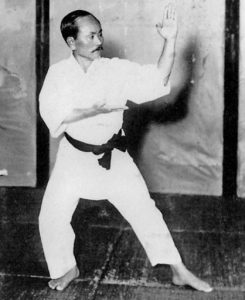
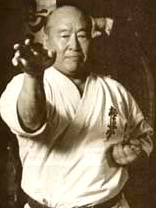
The 5 Pinan Katas taught in Kyokushin were introduced by Sosai Masutatsu “Mas” Oyama, the founder of Kyokushin, coming from his background in Shuri-te, as a 4th Dan Black Belt in Shotokan Karate, under it’s founder Gichin Funakoshi.
The Pinan were originally created by ‘Anko’ Yasutsune Itosu Sensei in 1905.
The word ‘Pinan’ historically has been translated as ‘Peaceful Mind’ in Karate, but more recent research by experts has confirmed the correct translation should be “Safe from Harm”.
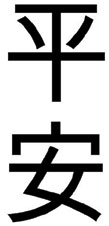
Pinan (Heian) is written using two characters. The first character (平) is pronounced “ping” in Chinese Mandarin and the Okinawan dialect, and “hei” in Japanese. The character originates from a pictogram denoting plants floating on the top of water and means “flat, level, even; peaceful, clam”.
The second character (安), which is pronounced “an” in all the languages mentioned, originates from a pictogram denoting a woman underneath a roof and means “peaceful, tranquil, quiet, content”.
However, when these characters are combined (平安) things change. Read on!
In Japanese, the two characters together would be pronounced as “Heian” and translate as “peace and tranquillity”.
Although, in Chinese they mean something very different!
The characters used for writing “Pinan” and “Heian” mean “safety” or “safe and sound”. Similar translations “safe from danger” and “safe from harm” are used by speakers of Mandarin. These translations all communicate the same sentiment and are in effect interchangeable. It is commonly used in China when seeing someone off.
Anko Itosu Sensei most probably would have used and meant “safe from harm” when naming the kata he created, to honour the Okinawan and Chinese roots of his karate, and not use the translation from mainland Japan.

Similarly at the time Itosu Sensei created the Pinan series, “karate” was written in Okinawa using the characters for “Chinese” (pronounced “kara” or “to”) and “hand” (pronounced “te” or “de”) 唐手 giving us the reading “Tōde”.
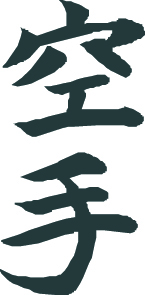
It was when the art spread to Japan that the character for “empty” (which can also be pronounced as “kara”) 空was widely substituted, in order to make the art easier to promote in mainland Japan, as it indicated that the Japanese wished to develop the combat form in Japanese style, and differentiate from the Okinawan and Chinese roots. Thus, it became “Karate”.
So, it would make natural sense that the characters Itosu Sensei also used for Pinan would follow the same principle, and so it would mean “Safe From Harm”, rather then “peaceful mind.” Which makes even more sense if you practice the kata, as there is nothing peaceful about them, but the Bunkai included will keep you safe from harm!
History of the Pinan Kata
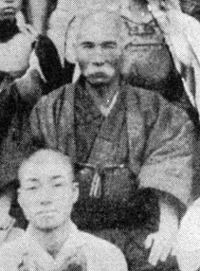
‘Anko’ Yasutsune Itosu (1830 -1915) who created the Pinan katas, a group of five empty hand forms, now taught in many styles of karate, including Shotokan, Shito-ryu, Wado-ryu, Shorin-ryu, Kobayashi-ryu, Matsubayashi-ryu, Shorei-ryu, Shukokai, Kosho-ryu kenpo, Tang Soo Do, and of course, Kyokushin.
Itosu was born in Yamagawa village, which was situated in the Shuri region of Okinawa. In 1901, Itosu put Karate onto the physical education program of the Shuri Jinjo elementary school. Itosu believed Karate to be too dangerous to be taught to children, so he set about disguising the more dangerous techniques contained within the katas. As a result of these modifications, the children were taught the katas as mostly blocking & punching. This enabled the children to gain benefits such as improved health and discipline from their karate practice, without giving them the knowledge of the dangerous fighting techniques that the katas contain, within the bunkai.
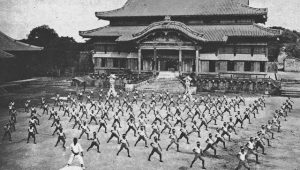
In 1905, Itosu was appointed as karate teacher to the Prefectural Dai Ichi College and the Prefectural Teachers’ Training College. In 1908 Itosu wrote a letter to the Prefectural education department that outlined his views on karate and asked that karate be introduced into the curriculum of all Okinawan schools. Itosu was granted his wish and karate became part of the education of all Okinawan children. The Pinan kata series was introduced into the Okinawan School District karate program as gym training from 1902 to 1907.
There are several stories about how Itosu developed the Pinan kata
One of the story claims Itosu learned a kata from a shipwrecked Chinese man living in Okinawa in the Tomari region. This kata was called “Chiang Nan” by the Chinese man. The form became known as “Channing”, an Okinawans/Japanese approximation of the Chinese pronunciation. The original form of the Channing kata is lost. Itosu formed 5 katas from the long Channan Kata which he thought would be easier to learn. It is said that Itosu changed the katas name from Chaing-Nan to Pinan as he found ‘Chaing’ too difficult to pronounce. The Pinans also include fighting techniques from other katas of the Shuri region where he lived.
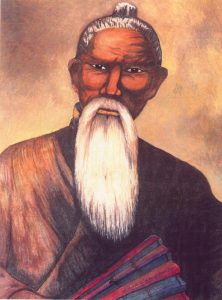
Another variation is that Pinan Shodan and Nidan were created by Matsumura “Bushi” Sōkon (Matsumura began the study of karate under the guidance of Sakukawa Kanga) and were originally called Channan Sho and Dai. They were based on kata taught at the Southern Shaolin Temple in Fukien Province of China, in the Five Elder style. The Chinese reading for this name is “Chiag Nan.” Chiag Nan was the name of a Chinese Diplomat who resided Shuri Okinawa. It is possible that Bushi got the techniques from him. Itosu created Pinan Sandan, Yondan, and Godan and added them to his own system.
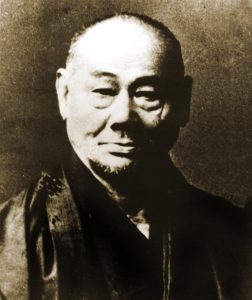
Choki Motobu, in both his published books on karate (Okinawa Kenpo Karate-jutsu Kumite-hen (1926) and Watashi no Karate Jutsu (1933), states “The Pinan were created by the modern Bujin (warrior) Itosu Sensei as teaching materials for his students, making them truly a unique form of Okinawan kenpo, which is indeed a very joyous thing for those who follow the Way” (Motobu, 1926, 1932).
We might not ever know the true origin of the kata, but we do know it was created to introduce people to Karate. Originally it was one long kata, but later broken down it into five and named accordingly.
When Ginchin Funakoshi went to mainland Japan, in 1917, and again in 1922,[2] he brought with him all of the Kata he had learned from his teacher, including and the Pinan kata he had taught to the school children for Itosu Sensei. As his teacher before him, Funakoshi altered the kata when introducing Tōde (Karate) to the people of Japan. For example, he changed the name Pinans to Heian (the Japanese pronunciation), switched number one kata for number two, added much deeper stances and higher kicks, replaced many front kicks with side kicks, as well as altering other moves in the kata series.
Shōtōkan was the name of the first official dojo built by Gichin Funakoshi, in 1936[3] at Mejiro, and unfortunately was destroyed in 1945 as a result of an allied bombing. Shōtō (松濤), meaning “pine-waves” (the movement of pine needles when the wind blows through them), was Funakoshi’s pen-name,[5] which he used in his poetic and philosophical writings and messages to his students. The Japanese kan (館) means “house” or “hall”. In honour of their sensei, Funakoshi’s students created a sign reading shōtō-kan, which they placed above the entrance of the hall where Funakoshi taught.[5] However, Gichin Funakoshi never gave his system a name, just calling it karate.
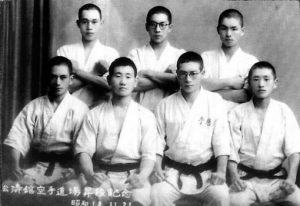
One of Funakoshi Sensei’s students was a young Korean named Choi Yeong-eui, who would later change his name to Masutatsu Oyama (Ōyama Masutatsu).
In 1946, Oyama enrolled in Waseda University School of Education to study sports science.
Wanting to continue his previous martial arts training and wanting the best in instruction, he contacted the Shotokan dojo operated by Gigō Funakoshi, the second son of karate teacher Gichin Funakoshi.
Oyama attended Takushoku University in Tokyo and was accepted as a student at the dojo of Gichin Funakoshi. He trained with Gichin Funakoshi for two years.
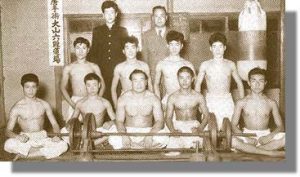
In 1953 Oyama opened his own karate dojo, named Oyama Dojo. Oyama’s own curriculum soon developed a reputation as a tough, intense, hard-hitting but practical style which was finally named Kyokushin, meaning ‘the ultimate truth,’ in a ceremony in 1957.
Sosai Mas Oyama adopted and incorporated the Pinan Katas into Kyokushin Karate with a few modifications, to adapt the Katas to the Kyokushin stances, giving more emphasis to force.
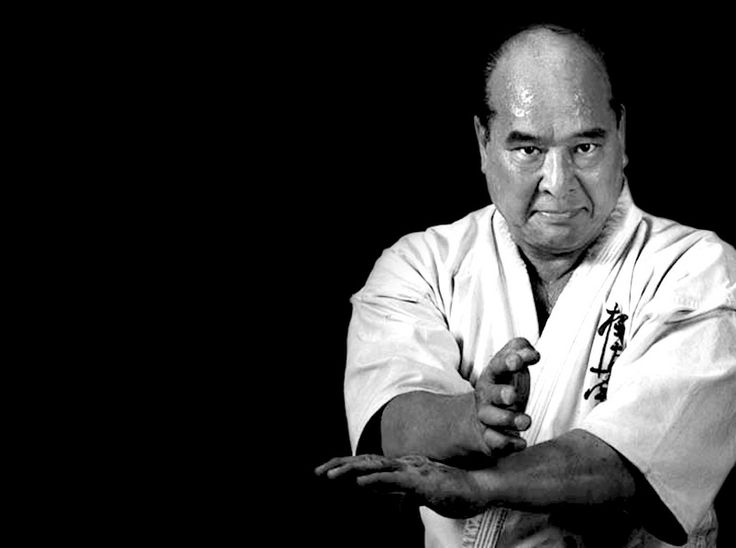
Osu !
Thank you for article.History of the Martial Arts is always enlightening.
Excellent! Thank you for you article.
Osu,
Thank you very much for this interesting article.
I am a long time student of Isshinryu Karate (founded by Tatsuo Shimabuku Sensei) under Tsuyoshi Uechi Sensei and just for the record Okinawan Isshinryu does not use Pinan or Heian kata. The katas used are Seisan, Seiunchin, Naihanchi, Wansu, Chinto, Kusanku, Sunsu, Sanchin and a number of Kobudo katas.
The Ishin-ryu system of Ticky Donovan Sensei might teach Pinan, but that is a completely different system.
Kind regard,
I thought this article gives us hints how Pinan kata’s technique can save us from harm in real fight.
And also I wanted to know how “Chiang Nan” writes in Chinese letter.
Probably from that Chinese letter can analize what’s the root’s purpose of Pinan, since that’s the original name of Pinan kata.
Interesting piece of history. Thank you Scott
Want to add my thanks. Will forward to colleagues who I know will also enjoy.
Thank you for this. Do you plan to write some other articles about old karate masters in Okinawa ?
Interesting piece of history, Scott, thank you! Osu!